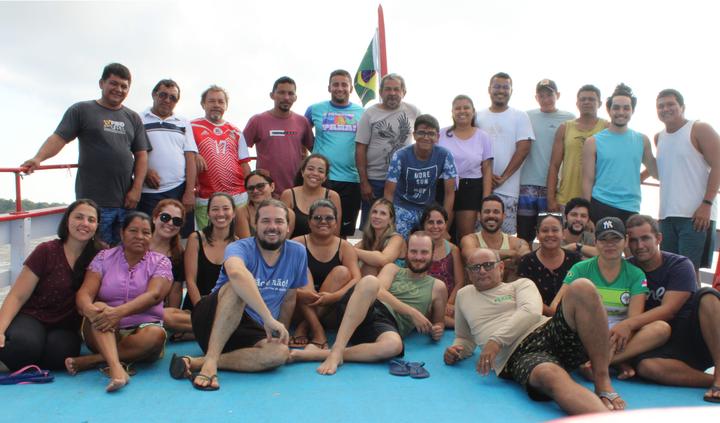HydroTraits
 Expedition to the Xingú River, Pará state, eastern Amazon, Brazil. Image credit © 2022 MAUA group.
Expedition to the Xingú River, Pará state, eastern Amazon, Brazil. Image credit © 2022 MAUA group.
Diversity of hydraulic-functional traits of Amazonian forest types in times of hydrological climate change
Description
This ATTO sub-project aims to describe and quantify the vulnerability of the most important tree species of different forest types in eastern Amazonia to climate-hydrological changes along a climatic gradient. In addition to the ATTO site, where there is already data on floristic composition in various ecosystems, this project aims to establish three research sites along a west-east gradient, where the number of consecutive months with monthly rainfall < 100 mm increases from 0 (ATTO site) to 2-3 (lower Trombetas River), 3-4 (lower Tapajós River) to 5-6 (lower Xingu River). At these three sites we planned floristic and above-ground biomass inventories in three forest types, ideally incorporating várzea and/or igapó, terra firme, and campinarana at all sites. The hydraulic functional attributes at leaf, stem and wood level of the five most abundant indicator species in each forest type and site will be investigated. Simultaneously, we will build spectral libraries of leaf tissues, bark tissues, and wood tissues using near-infrared spectroscopy (NIRS). Spectral models of fresh and dried material will be calibrated with inventories of functional attributes, with the aim of creating a rapid and innovative method for detecting hydrological functional attributes. With the ecosystem and interspecific comparison, we hope to compare the functional diversity of the most important Amazonian forest types along the climatic gradient, and with this an assessment of the future reaction of tree species, types of strategies and ecological functions to the increase in frequency and intensity of extreme climatic events.
Funding/ Partners
-
Conselho Nacional de Desenvolvimento Científico e Tecnológico (CNPq)
-
German Federal Ministry of Education and Research (BMBF)
-
Amazon Tall Tower Observatory (ATTO)
-
Karlsruhe Institute of Technology (KIT)
-
Instituto Nacional de Pesquisas da Amazônia (INPA)
-
Ecology, Monitoring and Sustainable Use of Wetlands (MAUA group)